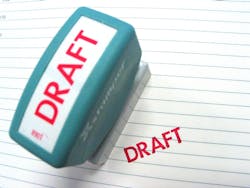CA-NV Section AWWA Responds to Drinking Water Standard
The California Department of Public Health (CDPH) announced the nation’s first drinking water standard specifically for hexavalent chromium. The proposed regulation would set the maximum contaminant level (MCL) at 10 parts per billion (ppb). The California-Nevada (CA-NV) Section of the American Water Works Assn. (AWWA) released the following statement:
Water agencies across California are absolutely committed to delivering safe drinking water to the communities they serve. The California Department of Public Health proposed a new drinking water standard of 10 parts per billion (ppb) for hexavalent chromium, or Cr-6. With this action, California proposes to set a far more restrictive limit than that set by the U.S. Environmental Protection Agency’s limit (100 ppb) for total chromium. When California finalizes a drinking water standard specific to Cr-6, water agencies in the state will do what it takes to ensure that all drinking water is below this limit.
The CA-NV Section of AWWA will carefully evaluate the feasibility, impacts and appropriateness of the draft standard and provide comments within the 45-day public comment period. Field research on viable treatment technologies to efficiently remove Cr-6 from water has shown that a very low drinking water standard for Cr-6 could come at a tremendous cost to the public. Very small water systems, and those serving poor populations will face the greatest challenge to meet the regulation. For these reasons, drinking water agencies want to make sure that the new limit on Cr-6 in drinking water is set at a level that is most protective of public health, while taking into full consideration the feasibility and affordability of treatment methods.
Much attention will focus on the 0.002 ppb Public Health Goal (PHG) level identified by the California Office of Environmental Health Hazard Assessment (OEHHA). Some may rush to conclude that any Cr-6 level above this PHG is harmful to public health. But in fact, OEHHA carefully points out that “...a PHG is not a boundary line between a ‘safe’ and ‘dangerous’ level of a contaminant, and drinking water can still be considered acceptable for public consumption even if it contains contaminants at levels exceeding the PHG.”
Extensive new research has been published on the health effects of Cr-6 since the current PHG was adopted. As a whole, this research strongly suggests that Cr-6 at low levels is far less of a health risk. It is imperative that OEHHA conduct a thorough review of this research to determine if the PHG was set appropriately or if it should be raised.”
Source: CA-NV Section AWWA
